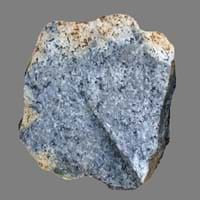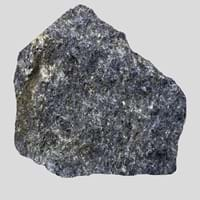Definition
Syenite is a coarse-grained igneous rock which is composed mainly of alkali feldspar and various ferromagnesian minerals
Blueschist is a metamorphic rock which is generally blue in color and is formed under conditions of high pressure and low temperature
Discoverer
Unknown
Edgar Bailey
Etymology
From French syénite, from Latin Syenites (lapis ) (stone) of Syene
From French schiste, Greek skhistos i.e. split
Class
Igneous Rocks
Metamorphic Rocks
Sub-Class
Durable Rock, Medium Hardness Rock
Durable Rock, Medium Hardness Rock
Group
Plutonic
Not Applicable
Other Categories
Coarse Grained Rock, Fine Grained Rock, Medium Grained Rock, Opaque Rock
Fine Grained Rock, Medium Grained Rock, Opaque Rock
Color
Brown, Buff, Cream, Green, Grey, Pink, White
Blue, Bluish - Grey, Purple, Shades of Blue
Durability
Durable
Durable
Appearance
Banded and Foilated
Dull and Banded
Interior Uses
Flooring, Homes, Hotels, Interior Decoration
Floor Tiles, Flooring, Homes, Hotels, Kitchens
Exterior Uses
As Building Stone, As Facing Stone, Paving Stone, Garden Decoration, Office Buildings
Garden Decoration, Office Buildings
Other Architectural Uses
Curbing
Not Yet Used
Construction Industry
As Dimension Stone, Cement Manufacture, Construction Aggregate, for Road Aggregate, Landscaping, Making natural cement, Manufacture of Magnesium and Dolomite Refractories
As Dimension Stone, Cobblestones, Rail Track Ballast, Roadstone
Medical Industry
Not Yet Used
Not Yet Used
Antiquity Uses
Artifacts, Monuments, Sculpture, Small Figurines
Artifacts, Monuments, Sculpture
Commercial Uses
Cemetery Markers, Creating Artwork
Cemetery Markers, Commemorative Tablets, Creating Artwork, Curling, Tombstones
Types
Shonkinite
Not Available
Features
Available in Lots of Colors and Patterns, Is one of the oldest rock, Matrix variable
Has High structural resistance against erosion and climate, Very fine grained rock
Archaeological Significance
Famous Monuments
Data Not Available
Data Not Available
Famous Sculptures
Data Not Available
Data Not Available
Formation
Syenites are formed due to alkaline igneous activities and are generally formed in thick continental crustal areas or in Cordilleran subduction zones.
Blueschist forms due to the metamorphism of basalt and other rocks with similar composition at high pressures and low temperatures and approximately corresponding to a depth of 15 to 30 kilometers and 200 to 500 °C.
Mineral Content
Amphibole, Biotite, Feldspar, Hornblade, Micas, Muscovite or Illite, Plagioclase, Pyroxene, Quartz
Albite, Chlorite, Epidote, Garnet, Glaucophane, Lawsonite, Muscovite or Illite, Quartz
Compound Content
Aluminium Oxide, CaO, Iron(III) Oxide, FeO, Potassium Oxide, MgO, MnO, Sodium Oxide, Phosphorus Pentoxide, Silicon Dioxide, Titanium Dioxide
Aluminium Oxide, CaO, Iron(III) Oxide, FeO, Potassium Oxide, MgO, MnO, Sodium Oxide, Phosphorus Pentoxide, Silicon Dioxide, Titanium Dioxide
Types of Metamorphism
Burial Metamorphism, Cataclastic Metamorphism, Contact Metamorphism, Hydrothermal Metamorphism, Impact Metamorphism, Regional Metamorphism
Not Applicable
Types of Weathering
Biological Weathering, Chemical Weathering, Mechanical Weathering
Mechanical Weathering
Types of Erosion
Chemical Erosion, Coastal Erosion, Glacier Erosion, Sea Erosion, Water Erosion, Wind Erosion
Chemical Erosion, Coastal Erosion, Water Erosion, Wind Erosion
Grain Size
Medium to Fine Coarse Grained
Fine to Medium Grained
Fracture
Not Available
Conchoidal
Streak
White
White to Grey
Porosity
Less Porous
Highly Porous
Luster
Subvitreous to Dull
Dull
Compressive Strength
Not Available
Toughness
Not Available
1.5
Specific Gravity
2.6-2.7
3-3.2
Transparency
Opaque
Opaque
Density
2.6-2.8 g/cm3
2.8-2.9 g/cm3
Specific Heat Capacity
Not Available
Resistance
Heat Resistant, Impact Resistant, Wear Resistant
Impact Resistant, Pressure Resistant
Deposits in Eastern Continents
Asia
China, India, Iran, Saudi Arabia, Sri Lanka, Taiwan, Thailand, Turkey, Vietnam
Japan, Turkey
Africa
Angola, Egypt, Madagascar, Namibia, Nigeria, South Africa
Egypt, Ethiopia, South Africa
Europe
Bulgaria, England, Germany, Norway, Romania, Switzerland
France, Greece, Iceland
Others
Not Yet Found
Not Yet Found
Deposits in Western Continents
South America
Brazil, Chile
Not Yet Found
Deposits in Oceania Continent
Australia
New Zealand, Queensland, South Australia, Western Australia
New Zealand
Syenite vs Blueschist Characteristics
Though some rocks look identical, they have certain characteristics which distinguish them from others. Characteristics of rocks include texture, appearance, color, fracture, streak, hardness etc. Syenite vs Blueschist characteristics assist us to distinguish and recognize rocks. Also you can check about Properties of Syenite and Properties of Blueschist. Learn more about Syenite vs Blueschist in the next section. The interior uses of Syenite include Flooring, Homes, Hotels and Interior decoration whereas the interior uses of Blueschist include Floor tiles, Flooring, Homes, Hotels and Kitchens. Due to some exceptional properties of Syenite and Blueschist, they have various applications in construction industry. The uses of Syenite in construction industry include As dimension stone, Cement manufacture, Construction aggregate, For road aggregate, Landscaping, Making natural cement, Manufacture of magnesium and dolomite refractories and that of Blueschist include As dimension stone, Cobblestones, Rail track ballast, Roadstone.
More about Syenite and Blueschist
Here you can know more about Syenite and Blueschist. The life cycle of a rock consists of formation of rock, composition of rock and transformation of rock. The composition of Syenite and Blueschist consists of mineral content and compound content. The mineral content of Syenite includes Amphibole, Biotite, Feldspar, Hornblade, Micas, Muscovite or Illite, Plagioclase, Pyroxene, Quartz and mineral content of Blueschist includes Albite, Chlorite, Epidote, Garnet, Glaucophane, Lawsonite, Muscovite or Illite, Quartz. You can also check out the list of all Igneous Rocks. When we have to compare Syenite vs Blueschist, the texture, color and appearance plays an important role in determining the type of rock. Syenite is available in brown, buff, cream, green, grey, pink, white colors whereas, Blueschist is available in blue, bluish - grey, purple, shades of blue colors. Appearance of Syenite is Banded and Foilated and that of Blueschist is Dull and Banded. Properties of rock is another aspect for Syenite vs Blueschist. The hardness of Syenite is 5.5-6 and that of Blueschist is 3.5-4. The types of Syenite are Shonkinite whereas types of Blueschist are Not Available. Streak of rock is the color of powder produced when it is dragged across an unweathered surface. The streak of Syenite is white while that of Blueschist is white to grey. The specific heat capacity of Syenite is 0.92 kJ/Kg K and that of Blueschist is Not Available. Depending on the properties like hardness, toughness, specific heat capacity, porosity etc., rocks are resistant to heat, wear, impact, etc.Syenite is heat resistant, impact resistant, wear resistant whereas Blueschist is impact resistant, pressure resistant.





